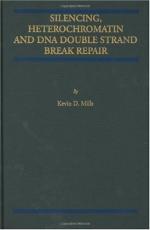|
This section contains 582 words (approx. 2 pages at 300 words per page) |

|
In order for an enormous length of DNA to fit into a tiny cell, it must be condensed. This is accomplished in a series of steps. First, the double helix is wound around groups of eight histone protein molecules. The resulting configuration resembles beads on a string, with each histone bundle and its associated DNA representing a bead, and the intervening, unwound DNA representing the string. These beads are called nucleosomes. This beaded structure is then coiled around a scaffolding of non-histone proteins into loops called chromatin. DNA exists during interphase in this state. When the cell is about to enter mitosis, however, the chromatin twists even more tightly upon itself, yielding tight bundles, or chromosomes. When the DNA is tightly wound, transcription factors have no access to the genes; therefore, transcription does not occur during mitosis.
Some parts of the chromosomes, however, remain in this tightly condensed...
|
This section contains 582 words (approx. 2 pages at 300 words per page) |

|


